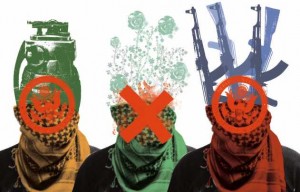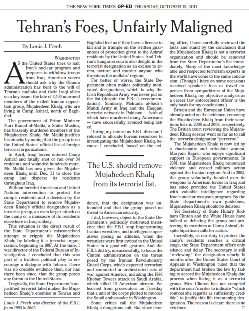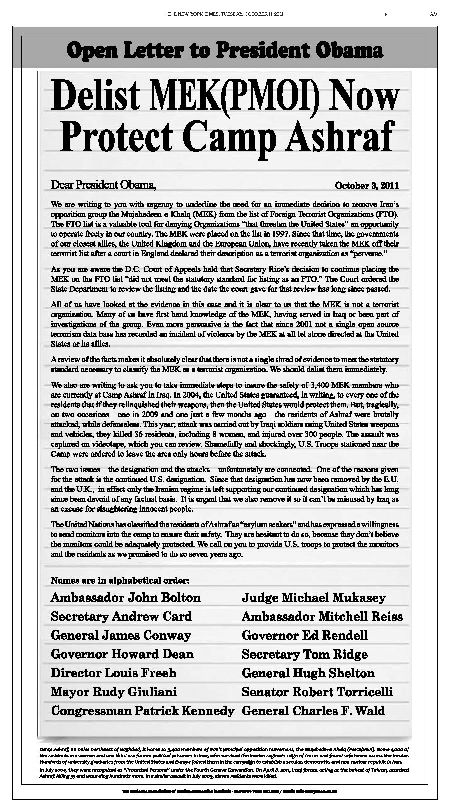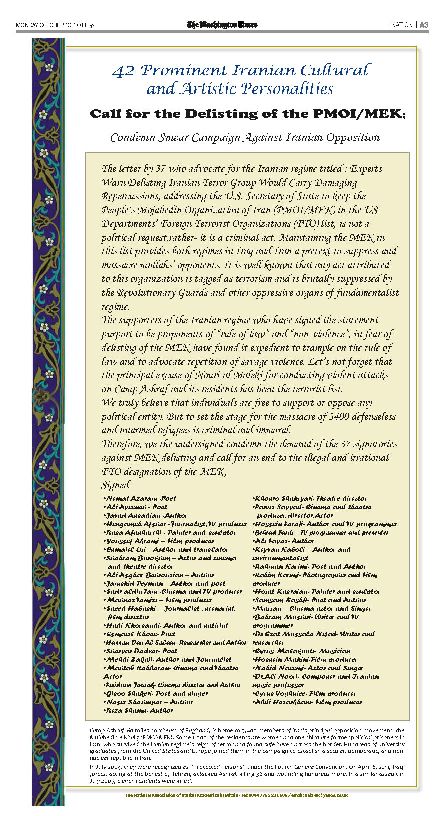THE WASHINGTON TIMES
Friends are branded as enemies while real enemies are appeased
As two current high-profile cases demonstrate, the U.S. government’s practice of listing “foreign terrorist organizations” (FTOs) has become an increasingly dangerous and hollow political exercise rather than a sober assessment of the real threats to America.
Last month, Afghanistan’s ruthless Haqqani Network reportedly staged a brazen attack against the U.S. Embassy in Kabul. The Haqqanis, who conduct grisly terrorist attacks on hotels, embassies and other targets to advance their agenda to become power brokers in a future political settlement, reportedly are responsible for hundreds of American deaths since 2001. Some American military officers apparently are furious that the Obama administration decided not to designate the Haqqani Network as a terrorist organization because it was feared that listing the group would make it harder for the Afghan government to negotiate with the Haqqanis.
At the same time, the United States continues to list the Mujahedin-e-Khalq (MEK), Iran’s main opposition group and a declared democratic ally, as an FTO even though it meets none of the criteria and long ago renounced violence. Importantly, the group was the first to reveal Iran’s 20-year clandestine nuclear program and provided invaluable intelligence to the U.S. military in Iraq, which not only helped identify and neutralize Iran’s proxy terrorist groups operating in that country but undoubtedly saved American lives in the process.
What gives? Listing organizations like the MEK and not listing groups like the Haqqanis sends the wrong message to friends and foes alike.
In the case of the MEK, the group was put on the State Department’s list of terrorist organizations in 1997 to appease the Tehran regime. The mullahs, who hate and fear the MEK, demanded that the group be listed as a precondition for potential negotiations with the United States. Those negotiations never materialized, and today, Iran remains the most dangerous player in the region. Ironically, the misguided FTO designation has given Iran and its proxies in Iraq a license to kill thousands of MEK members, including a massacre on April 8 that killed or wounded hundreds of unarmed men and women in their Iraqi base known as Camp Ashraf. The current drawdown of protective U.S troops in Iraq means that almost certain annihilation awaits a group that has dedicated itself to a democratic, non-nuclear Iran.
There is a growing movement to delist the MEK. It includes a bipartisan group of 96 members of Congress, including chairmen of the House Select Intelligence and Armed Services committees and an impressive roster of former high-level intelligence, law enforcement and security officials from the Clinton, George W. Bush and Obama administrations.
As for the Haqqanis, sources indicate that during high-level discussions last year, Obama administration officials debated listing the group as an FTO, which would have allowed for assets to be frozen and could help dry up the pool of financial donors supporting the group. Though some political leaders and military commanders pushed for the designation in response to the group’s escalating attacks on Americans, the administration decided that such a move might alienate the Haqqanis and drive them away from the negotiating table. It also would have been perceived as another “provocation” in the already tenuous U.S.-Pakistani relationship. In late September, Adm. Michael Mullen, then chairman of the Joint Chiefs of Staff, made a compelling case for Pakistani complicity in the attack against the U.S. Embassy in Kabul.
What began as a coordinated effort to identify, list, delegitimize and defang terrorist groups has instead become a symbol of appeasement: America put the MEK on the list to appease the Iranians and has kept the Haqqanis off the list to appease Pakistan as well as Afghanistan, which will have to deal with the network long after Americans leave.
Today, there is once again a fierce debate inside the Obama administration on whether to put the Haqqani Network on the terrorist list. At the same time, a debate rages over whether to delist the MEK. The U.S. Court of Appeals for the District of Columbia has ordered the U.S. State Department to evaluate the designation as pressure mounts within the department for a new strategy for dealing with the Iranian regime, which it acknowledges is the No. 1 state sponsor of terrorism.
It appears we are dangerously inconsistent when it comes to the FTO list. Potential friends are branded as terrorists, and avowed enemies avoid a stigmatized identity that could help sap their mystique, funding and support. Both decisions should be reversed immediately, and the whole FTO strategy needs to be examined. The FTO list should be an instrument for counterterrorism, not a tool of negotiation in which hundreds of lives – not to mention American prestige – are used as leverage.
Gen. Hugh Shelton is a former chairman of the Joint Chiefs of Staff.
http://www.washingtontimes.com/news/2011/oct/13/ending-hypocrisy-of-terrorist-designation/



